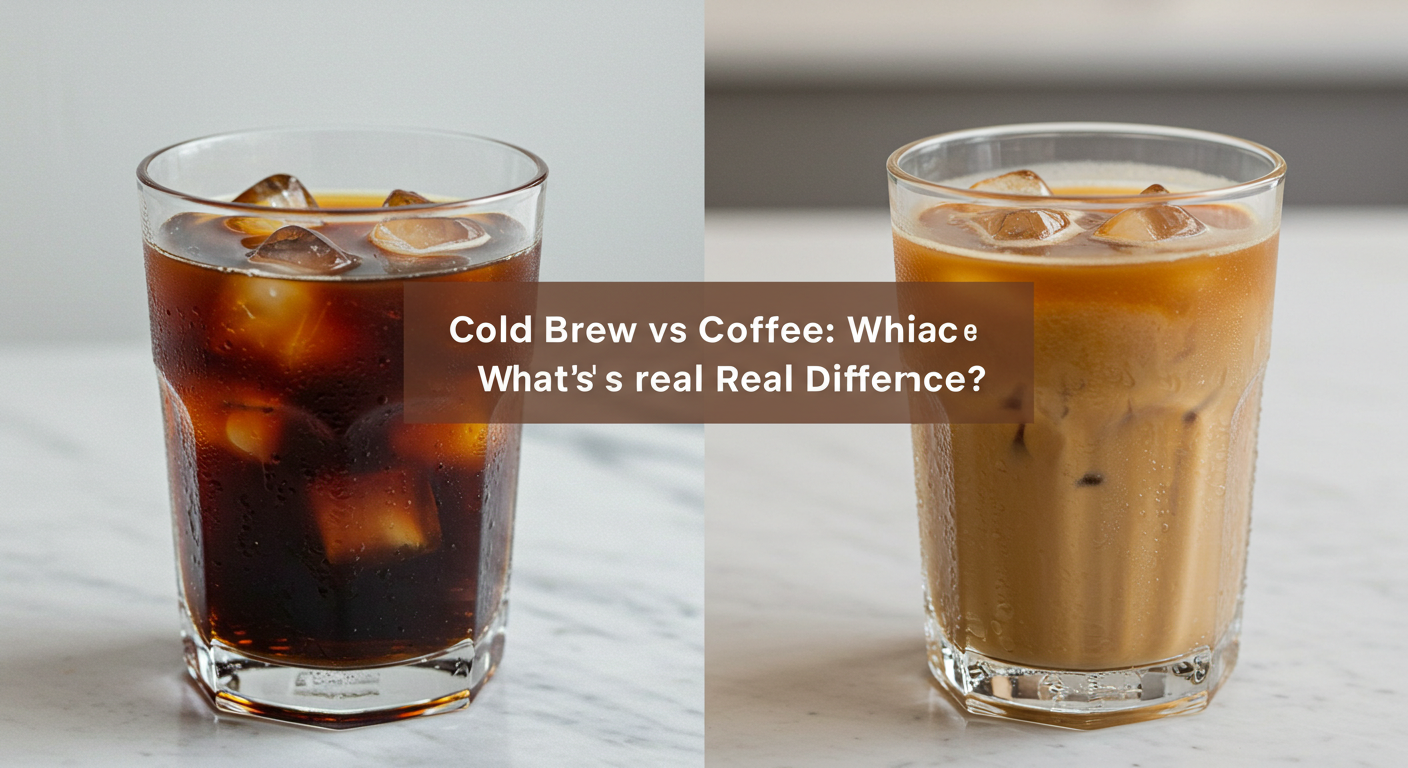On a hot day, nothing satisfies quite like a chilled coffee. But if you’ve ever stood in front of a café menu wondering whether to order cold brew or iced coffee, you’re not alone. Though they might look similar, they’re completely different beverages — in taste, preparation, caffeine content, and more.
In this article, we’ll break down the real differences between cold brew and iced coffee so you’ll always know which one to choose.
What Is Cold Brew?
Cold brew is coffee that is brewed with cold or room temperature water over a long period of time — typically 12 to 24 hours.
How It’s Made:
- Coarse-ground coffee is steeped in cold water.
- The mixture is left to extract slowly, usually in the fridge.
- After brewing, it’s filtered and often diluted before serving.
Taste Profile:
- Smooth and mellow
- Naturally sweet
- Low acidity and bitterness
Cold brew is ideal for people who prefer a less acidic, more rounded coffee experience.
What Is Iced Coffee?
Iced coffee is regular hot coffee that’s chilled and served over ice. It’s much quicker to make than cold brew.
How It’s Made:
- Brewed hot using any method (drip, pour-over, etc.)
- Cooled down quickly — sometimes with a “flash chill” technique
- Poured over ice, often with milk or sweeteners
Taste Profile:
- Bright and bold
- More acidic than cold brew
- Tastes like traditional coffee, just cold
Iced coffee is perfect for those who love the classic flavor of hot coffee but want it cold.
Key Differences at a Glance
| Feature | Cold Brew | Iced Coffee |
|---|---|---|
| Brew Method | Cold water, long steep (12–24 hrs) | Hot water, quick brew |
| Brew Time | Slow | Fast |
| Acidity | Low | Higher |
| Flavor | Smooth, sweet, chocolatey | Bright, bold, acidic |
| Caffeine Content | Typically higher (per ounce) | Moderate |
| Shelf Life | Up to 1–2 weeks (in fridge) | Best consumed same day |
Which Has More Caffeine?
Cold brew usually has more caffeine, especially if it’s undiluted. Since it’s brewed as a concentrate, even when diluted, it often ends up stronger than regular coffee.
However, this can vary depending on:
- Coffee-to-water ratio
- Brew time
- Serving size
Pro tip: Always ask if your cold brew is a concentrate or already diluted.
Serving Style and Add-ins
Cold Brew:
- Served over ice
- Often mixed with water, milk, or cream
- Great with vanilla, cinnamon, or chocolate flavorings
Iced Coffee:
- Served over ice
- Typically enjoyed with sugar and milk
- Can be flavored just like hot coffee
Which One Should You Choose?
Choose Cold Brew If:
- You want a smooth, less acidic coffee.
- You like your coffee strong and slightly sweet, even without sugar.
- You’re okay with prepping ahead for convenience later.
Choose Iced Coffee If:
- You love the taste of traditional coffee.
- You want your coffee fast and don’t mind a bit of acidity.
- You enjoy experimenting with hot brew methods like pour-over or French press.
Can You Make Both at Home?
Absolutely!
Homemade Cold Brew:
- Mix 1 cup coarsely ground coffee with 4 cups cold water.
- Let steep in the fridge for 12–24 hours.
- Strain using a fine filter or cheesecloth.
- Serve over ice, diluted to taste.
Homemade Iced Coffee:
- Brew your favorite hot coffee.
- Let it cool or pour over ice to chill quickly.
- Add sweetener and milk if desired.
Cost and Availability
Cold brew is often more expensive at cafés due to:
- Long brew time
- Higher coffee-to-water ratio
Iced coffee is usually cheaper and more readily available at any coffee shop.
Storage and Freshness
- Cold Brew: Lasts 1–2 weeks in the fridge, making it a great prep-ahead option.
- Iced Coffee: Best enjoyed fresh; can taste stale after a few hours.
Cold Brew vs Iced Coffee: Final Verdict
Both cold brew and iced coffee are fantastic ways to cool down with caffeine. Your choice depends on what you’re looking for:
- Want something rich, smooth, and naturally sweet? Cold brew is your best friend.
- Craving the traditional coffee flavor in cold form? Go for iced coffee.
Either way, with a glass in hand, you’re sure to enjoy a refreshing take on your favorite drink.


